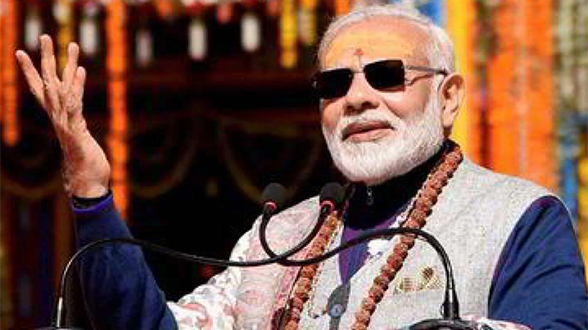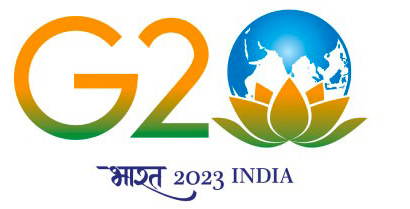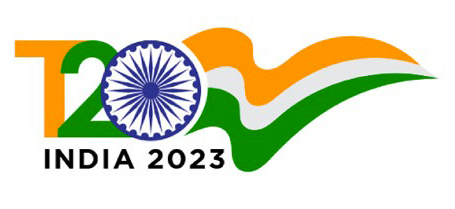Vedanta: The Spiritual Canon Guiding India’s Strategic Thought
Be it in the context of Swachh Bharat campaign or any other flagship programmes in recent years, Narendra Modi has often invoked Swami Vivekananda and Vedanta teachings.

After decades of fractured mandates and coalition governments, India was blessed with a majority government in 2014, and again in 2019, mainly because one inspired leader, Narendra Modi, could successfully connect with the contemporary zeitgeist of the electorate. The ability of a leader for self-abnegation of one’s ‘atman’ to commune with the spirit of a nation is a rare but not an unprecedented occurrence in Indian history. It has happened before, in the case of the Father of Nation, Mahatma Gandhi.
At a personal level, the Prime Minister is himself a great admirer of Vedanta. Be it in the context of Swachh Bharat (Clean India) campaign or any of the other flagship programmes in recent years, Modi has often invoked Swami Vivekananda and Vedanta teachings. In fact, the Green Grids Initiative-One Sun One World One Grid (OSOWOG), the idea first put forth by Modi at the First Assembly of the International Solar Alliance (ISA) in October 2018, aims to link Asia, Africa and later, the entire world, to the Sun—the energy equivalent of the spiritual Supreme Being (Brahman or Godhead).
Many of Vedanta’s peerless precepts, culled from its three principal sources of the Upanishads, the Brahama Sutras and the Bhagvad Gita, today guide modern Indian defence and foreign policy.
With the power to ignite and illuminate human consciousness, Vedanta has fostered and nourished every facet of Indian life and culture for centuries, making India the most resilient and glorious civilization in the world. Many of Vedanta’s peerless precepts, culled from its three principal sources of the Upanishads, the Brahama Sutras and the Bhagvad Gita, today guide modern Indian defence and foreign policy.
At the highest doctrinal level, India adopted ‘Satayamev Jayate’ (Truth alone Triumphs) as its national motto on January 26, 1950. It is a mantra enshrined in the Vedantic canon of the Mundaka Upanishad. Another ‘Mahavakya’(Grand Pronouncement) is ‘Vasudhaiva Kutumbakam’ (The World is one Family), drawn from the ‘Maha Upanishad’, which has been acknowledged as the cornerstone of India’s political and cultural diplomacy by Prime Minister Modi. This precept is vividly enshrined in Modi’s Neighbourhood First Policy and Vaccine Maitri, particularly in placing higher human values above narrow parochialism or nationalism. Many aspects of India’s foreign policy, such as Panchsheel, multi-alignment, de-hyphenated relations and strategic restraint in the face of provocation suggest a Vedantist outlook.
The influence of Vedanta has not been limited to India’s spiritual and philosophical ethos. It has also had a profound impact on Indian political and strategic culture. For one, the essential synonymy of the individual soul (Atman) with the Brahman in Advaita philosophy of Vedantism has provided limitless assurance and boundless spiritual strength to its practitioners in India, thus helping India overcome extreme socio-political and humanitarian calamities through the ages. The Vedantist adage of ‘Aham Brahmasmi’ (I am Brahman or God) has inspired many, from thinkers to freedom fighters and revolutionary leaders, and provided resilience to an ancient civilisation in the face of protracted challenges. It has enabled Indian strategic thought to look beyond setbacks with optimism.
The Vedantist adage of ‘Aham Brahmasmi’ (I am Brahman or God) has inspired many, from thinkers to freedom fighters and revolutionary leaders, and provided resilience to an ancient civilisation in the face of protracted challenges.
The profundity of Vedanta ideology has left an indelible mark on India’s indigenous thought and vision. The Vedanta outlook has permeated Indian society and enabled it to transcend denomination-driven thought. India’s composite society, and the cultural assimilation over centuries of foreign ideological and religious strands is proof enough. For an individual Indian, the highest form of consciousness is the awareness of being “Indian” and belonging to the Indian civilisation ethos despite individual diversities. This is akin to the Atman’s symphony with the Brahman.
During the freedom struggle, the precepts of Vedanta stirred up the entire nation, regardless of caste, language or religion, encouraging it to cast off colonial fetters, unleashing the immense potential of a large part of humanity. However, this political revival first manifested itself in the spiritual domain. Engendering the spirit of self-awareness, Vedanta philosophy inspired a host of reform movements of the 19th century, such as Raja Ram Mohun Roy’s Bahmo Samaj, Dayanad Saraswati’s Arya Samaj, the Ramakrishna Mission of Vivekananda and several others. It illuminated the poetry of Aurobindo and Rabindranath Tagore, as also the politics of firebrand freedom fighters like Bal Gangadhar Tilak and Lala Lajpat Rai. It imbued the philosophy of champions of non-violence like Mahatma Gandhi as well as Jawaharlal Nehru and Sardar Vallabhbhai Patel. It also inspired revolutionary advocates of the classless society and state socialism such as Netaji Subhash Chandra Bose.
India’s weltanschauung today, more than ever before, is founded on the all-encompassing interconnectedness expounded by the ‘advaita’ school of Vedanta. Thus, the concept of ‘Swarajya’ is both a spiritual and a political concept. The apotheosis of the individual soul in its journey to merge with the Supreme Being or Brahman frees it from dependence on any other external factor. The atman experiences a connect to the Brahman in a state of being ‘self-sustaining and self-ruled’ or ‘Swarajya’. This can be equated with the nation’s social, political and economic emancipation in an inter-connected world. At the geo-strategic level, Swarajya defines India’s strategic autonomy. The refrain of ‘Atma Nirbhar Bharat’ under Prime Minister Modi is another similar ideation. It implies independence or Swarajya in India’s economic journey without negating the reality of an inter-connectedness in which growth and development is a collective global goal.
Swarajya leads to the Gandhian ideal of Sarvodaya (emancipation of all). When nations, like the individual, are independent and yet linked symbiotically to the larger goals of humanity, it ignites a spirit of self-reliance that co-exists with a wider commitment to regional and global public goods, such as counter-terrorism, clean energy, resilient supply chains, climate change, disaster relief and humanitarian assistance.
The concept of ‘Swarajya’ is both a spiritual and a political concept. The apotheosis of the individual soul in its journey to merge with the Supreme Being or Brahman frees it from dependence on any other external factor.
The Vedantic approach that underlines Modi’s foreign policy and external engagement can make nations more independent, yet less transactional in their approach. These precepts can teach the world to attain Sarvodaya. They beautifully reconcile the paradox of being both patriotic and universalist at the same time, or, in India’s case, Atmanirbharta alongside an active global role. As Mahatma Gandhi himself put it, “My nationalism is as broad as my swadeshi. I want India’s rise so that the whole world may benefit”. It is in a similar vein that PM Modi stated in his address to the 76th UN General Assembly on September 25, 2021 that “when India grows, the world grows, when India reforms, the world transforms”.
Vedanta literature has been a potent guide for Indian diplomacy and warfare through the ages. In the strategic field, it is the Vedanta texts which provide the ideal of the Dharma Yudh or the ‘Just War Theory’ (jus bellum justum). The Upanishadic teaching of ‘ahimsa’ is not an absolutist injunction when viewed through the teachings of the Bhagvad Gita. When dharma (righteousness) is subverted, and if war becomes inevitable, the Bhagvad Gita permits the righteous to take recourse to arms in defence of dharma. An example is India’s determined response to China’s aggressive moves on India’s borders.
The Bhagvad Gita, which is integral to the Vedantist canon, has immense value for military studies. It offers salvation through ‘karma’ or action, just as it motivated Arjuna to evolve into a committed ‘satvik karamyogi’, one who is not driven by ‘rajsik’ (selfish passion and aggression) or ‘tamasik’ (emotions of darkness—passivity or ignorance), but by righteous motivations to reinstate truth and to fight for a higher purpose.
It is the value of the commitment to the notion of duty towards the motherland, a satvik precept that guides many of India’s policies and actions today. This is part of a great Indian tradition that needs wider appreciation.
This commentary originally appeared in News 18.
The views expressed above belong to the author(s).




